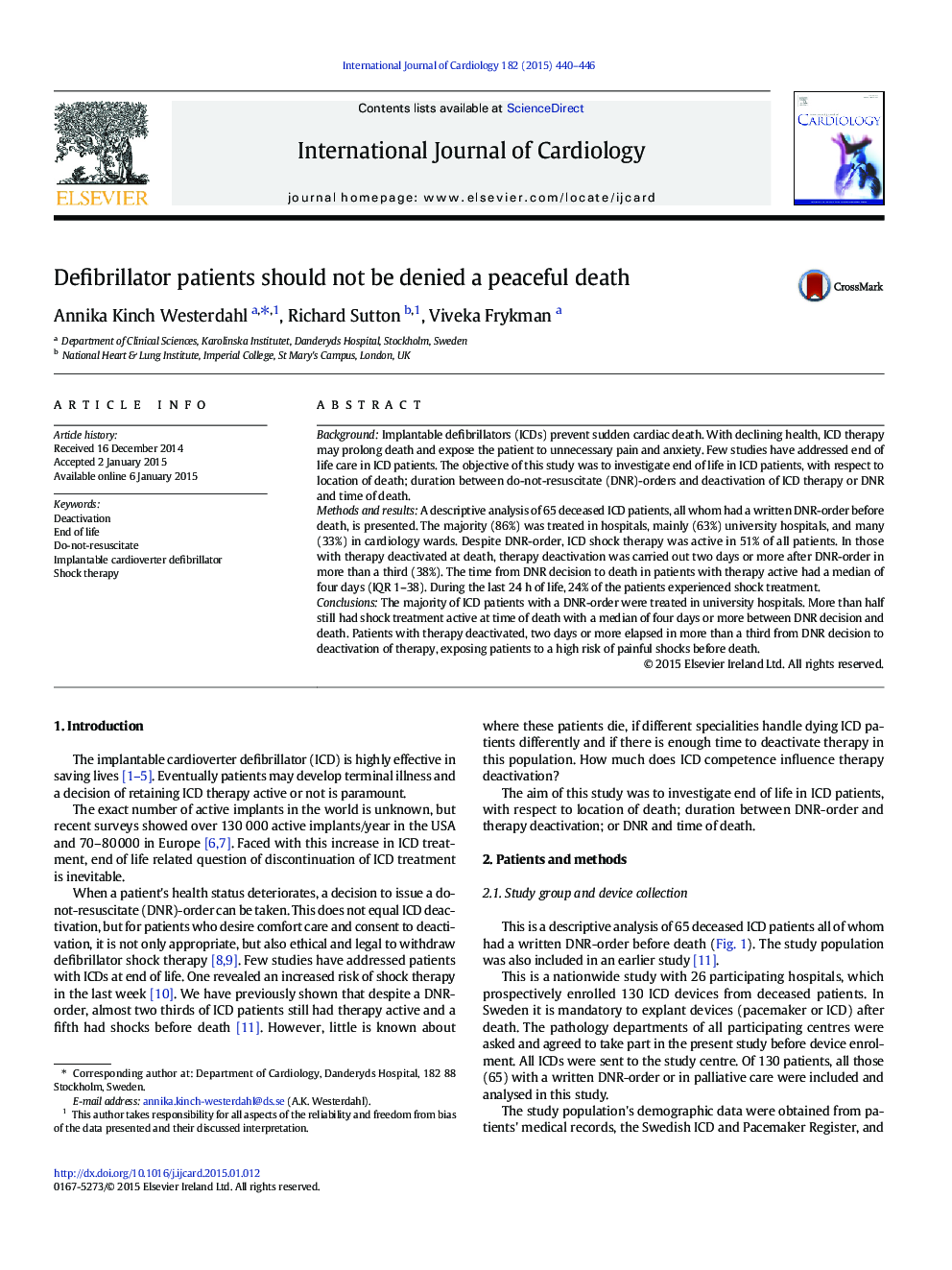| Article ID | Journal | Published Year | Pages | File Type |
|---|---|---|---|---|
| 5967416 | International Journal of Cardiology | 2015 | 7 Pages |
BackgroundImplantable defibrillators (ICDs) prevent sudden cardiac death. With declining health, ICD therapy may prolong death and expose the patient to unnecessary pain and anxiety. Few studies have addressed end of life care in ICD patients. The objective of this study was to investigate end of life in ICD patients, with respect to location of death; duration between do-not-resuscitate (DNR)-orders and deactivation of ICD therapy or DNR and time of death.Methods and resultsA descriptive analysis of 65 deceased ICD patients, all whom had a written DNR-order before death, is presented. The majority (86%) was treated in hospitals, mainly (63%) university hospitals, and many (33%) in cardiology wards. Despite DNR-order, ICD shock therapy was active in 51% of all patients. In those with therapy deactivated at death, therapy deactivation was carried out two days or more after DNR-order in more than a third (38%). The time from DNR decision to death in patients with therapy active had a median of four days (IQR 1-38). During the last 24Â h of life, 24% of the patients experienced shock treatment.ConclusionsThe majority of ICD patients with a DNR-order were treated in university hospitals. More than half still had shock treatment active at time of death with a median of four days or more between DNR decision and death. Patients with therapy deactivated, two days or more elapsed in more than a third from DNR decision to deactivation of therapy, exposing patients to a high risk of painful shocks before death.
